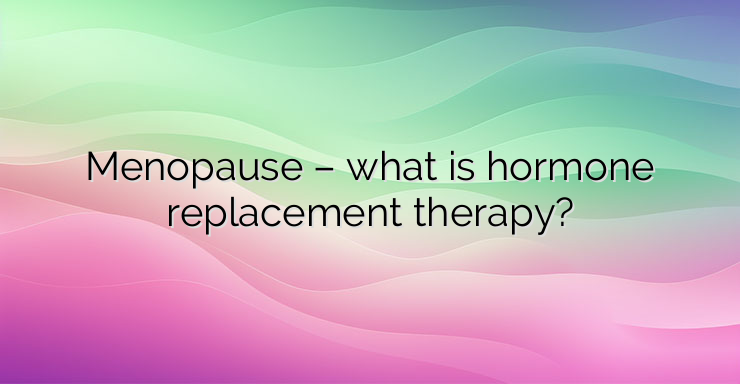As the name suggests, hormone replacement therapy is the replacement of female sex hormones in menopausal women. These hormones are estrogen and progesterone. They are released by the ovaries and affect changes in the body’s cycle, which controls menstruation, mood and women’s health. Estrogen is also very important for maintaining strong and healthy bones and preventing osteoporosis. In a healthy woman of childbearing age, hormones are produced and released by the pituitary gland in the brain, including luteinizing hormone and follicle-stimulating hormone. They stimulate the work of the ovaries. At the same time, estrogen and progesterone are released from the ovaries. These hormones prepare the endometrium (womb) for pregnancy. If pregnancy does not occur, the levels of these hormones drop and the menstrual cycle occurs. After menopause, the ovaries no longer respond to stimulation from pituitary hormones and stop producing estrogen and stimulating the release of eggs. Due to the low levels of estrogen, progesterone and inhibin, there is a loss of negative feedback on the hypothalamus and pituitary gland, so the levels of follicle-stimulating and luteinizing hormones are significantly increased. Irregular menstruation before menopause is called “menopause”. “Perimenopause” refers to the time within 12 months of the last menstrual cycle, while postmenopause refers to the time after. Treating women with hormone replacement therapy replaces hormones that are no longer being secreted by the ovaries and can relieve some of the symptoms associated with menopause, allowing a woman to feel better, both physically and mentally. Menopause symptoms usually last between one and five years and vary from woman to woman. Some symptoms may gradually disappear without any therapy, but in others the symptoms may be so severe that long-term hormone replacement therapy is required. Women who start menopause early before the age of 40 have what is called “premature ovarian failure”. Other triggers that are associated with earlier menopause include underlying medical conditions (eg, Addison’s disease), autoimmune diseases, certain infections, or previous cancer treatments, such as certain types of chemotherapy or radiation therapy to the pelvic area. Hormone replacement therapy can be administered in the form of tablets, patches, creams or gels, it can also be taken in different forms: Estrogen only – suitable for women who have undergone a hysterectomy in the past; Cyclic combined – which is taking both estrogen and progesterone together and re-introduces monthly cycles; Continuous combined – these prevent the cycle and can be combined estrogen and progesterone. Women who have not had a history of hysterectomy should receive combined replacement therapy, replacing both estrogen,and progesterone to prevent thickening of the lining of the uterus and therefore reduce the risk of endometrial cancer. In cases of hysterectomy, estrogen-only hormone replacement therapy can be administered to patients. References: https://www.menopausedoctor.co.uk/ https://thebms.org.uk/publications/consensus-statements/hormone-replacement-therapy/ https://www.nice.org.uk/guidance/ ng23


Leave a Reply